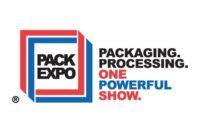SymphonyIRI Group’s latestTimes & Trends report,
“Private Label: Brand Positioning in the New World Order,” explores
current and emerging trends around private label, as well as national
brand efforts to protect and grow their position in the CPG
marketplace.
It wasn’t so long ago that many shoppers were embarrassed to be seen with a private label product in their cart. Today, nearly everyone buys private label products with no stigma attached. That’s because private label products bring something new to the market. They’re no longer the “me too” products that offer “the same thing for less money.” In fact, they are strategic weapons that separate a retailer from its competitors in a way that helps to build loyalty and purchase behavior. And still, private label can be-should be-even more.
SymphonyIRI Group’s latestTimes & Trends report, “Private Label: Brand Positioning in the New World Order,” explores current and emerging trends around private label, as well as national brand efforts to protect and grow their position in the CPG marketplace. Much opportunity remains for private label marketers and national brand marketers alike. But, success will be achieved by those who are thinking outside the box.
“At nearly 23% of CPG [consumer packaged goods] unit sales across retail channels today, private label products certainly have momentum and command a sizeable share of consumers’ CPG spending,” says John McIndoe, senior vice president, marketing for SymphonyIRI Group, Chicago. “However, this momentum is not demonstrated equally across channels, retailers, departments or categories. This means there is room for private label and national brand manufacturers to capitalize on opportunities. The key for both camps is to center their efforts on the shopper. Those that effectively identify and deliver against critical shopper needs will win share of wallet and shopper loyalty.”
Share trends
While retailers across channels are working to strengthen their private label programs, performance at the channel level varies. Today, private label share is largest within the grocery channel, but private label share of sales slid 0.6 points during the past year.
“Both manufacturers and retailers know that private label is not a panacea,” says Susan Viamari, editor of the Times & Trends reoprt. “Private label products remain, on average, 29% lower priced than national brands. Remove that price advantage and dollar and unit sales could plummet. In fact, the shrinking private label price gap very likely contributed to some of the private label share losses experienced during the past year. Going forward, private label products are subject to the same commodity price increase pressures as national brands, so establishing and maintaining effective pricing and promotion strategies should be top of mind for every CPG marketer in the marketplace today.”
Category opportunities
Private label has an above average and growing presence in 30 of the Top 100 CPG categories.
National brands are entrenched in 22% of the Top 100 CPG categories. In six of the Top 100 CPG categories, private label share is above average, but national brands are winning share of spending. The pasta category is one example of a category where national brands are taking such a stand. This category is seeing the largest decline in private label share thanks in part to innovation, such as whole grains and added nutrients that brings some level of differentiation to the category.
Strategies
Manufacturers seeking to develop effective private label mitigation strategies should consider the following action items:
• Identify and assess brand-specific opportunities and risks with respect to private label.Monitor price gaps between their brands and private label alternatives to ensure an optimal price gap is maintained, understand private label performance across key categories and leverage value-oriented pricing and promotion programs to protect and grow share.
• Refine competitive strategies vis-à-vis private label.Maintain solid understanding of price/value perceptions across key consumer segments and invest in innovation that will bring differentiation to the marketplace.
• Measure and monitor actual vs. planned impact of brand-related initiatives.Test new product concepts before embarking on development plans and track and benchmark store-level shifts relative to private label among key retail partners.
Retailers seeking to grow private label share should consider the following action items:
• Identify and assess store brand opportunities and threats.Tailor store brand offerings at the market level and support private label lines with consumer-centric and highly integrated marketing campaigns, including in-store display and feature ad support.
• Refine private label development strategies. Evaluate feasibility of multi-tier offerings across key categories/product lines, either alone or in conjunction with national brand manufacturer partners.
• Measure and monitor actual vs. planned impact of private label-related initiatives. Test market product, pricing and promotion changes prior to and immediately following rollout and track and benchmark store-level store brand share shifts relative to national brands.
To download a copy of this report, go to http://www.symphonyiri.com/Insights/Publications/TimesTrends/tabid/106/Default.aspx.
Get our new eMagazine delivered to your inbox every month.
Stay in the know on the latest snack and bakery industry trends.
SUBSCRIBE TODAY!Copyright ©2024. All Rights Reserved BNP Media.
Design, CMS, Hosting & Web Development :: ePublishing



